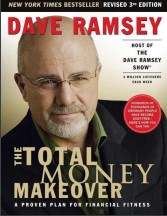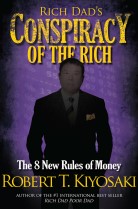Overview
Are you tired of living paycheck to paycheck and wondering how to achieve financial freedom? Look no further than “Rich Dad Poor Dad” by Robert Kiyosaki and Sharon Lechter.
In this captivating and informative book, Kiyosaki shares his personal experiences and financial wisdom, providing readers with a new perspective on wealth and success.
summary
The main theme of “Rich Dad Poor Dad” revolves around the idea of financial literacy and acquiring assets that generate income, rather than relying solely on a traditional job or a steady paycheck. Kiyosaki emphasizes the importance of financial education, challenging conventional beliefs about money, and adopting a mindset focused on building wealth.
The book introduces several concepts, including the Cashflow Quadrant, which categorizes individuals into four groups based on their income sources: employees, self-employed individuals, business owners, and investors. It encourages readers to strive towards becoming business owners or investors, as these categories offer more opportunities for financial independence and wealth creation.
Kiyosaki highlights the significance of understanding financial statements, investing in real estate, starting a business, and building passive income streams. He argues that financial literacy and taking calculated risks are essential in order to achieve financial freedom and avoid the so-called “rat race.”
While “Rich Dad Poor Dad” has resonated with many readers and inspired them to rethink their approach to money, it’s worth noting that some financial experts have criticized certain aspects of the book. They argue that it oversimplifies complex financial matters and places too much emphasis on real estate investing as the primary path to wealth.
1. Overview of the Book:
“Rich Dad Poor Dad” revolves around the contrasting lessons Kiyosaki learned from his two fathers: his own “Poor Dad,” who had a stable job but struggled financially, and his best friend’s “Rich Dad,” an entrepreneur who amassed significant wealth.
This book delves into their contrasting mindsets and financial education, shedding light on the importance of financial literacy.
2. Key Lessons and Concepts:
The book emphasizes the critical role of financial education and challenges
conventional beliefs about money. Kiyosaki presents several key concepts, including:
Mindset Shift:
Kiyosaki encourages readers to adopt a wealthy mindset, focusing on assets instead of liabilities. He urges individuals to prioritize investments that generate income and appreciate in value.
The Rat Race:
Kiyosaki highlights the detrimental effects of being stuck in the “rat race,” where individuals work tirelessly to cover expenses but fail to build wealth. He offers strategies to escape this cycle and achieve financial independence.
Assets vs. Liabilities:
Kiyosaki distinguishes between assets, which generate income, and liabilities, which drain resources. By understanding this distinction, readers can make informed financial decisions and build a solid foundation for wealth creation.
3. Engaging Storytelling:
One of the book’s strengths lies in its engaging storytelling approach. Kiyosaki intertwines personal anecdotes, real-life examples, and conversations with his two fathers, making the concepts relatable and easy to grasp.
This conversational writing style makes “Rich Dad Poor Dad” accessible to readers of all backgrounds.
4. Critique and Controversy:
While “Rich Dad Poor Dad” has gained immense popularity, it has also faced criticism. Some argue that the book lacks specific investment advice and focuses too much on mindset.
However, it’s important to recognize that the primary goal of the book is to inspire financial education rather than providing step-by-step instructions for wealth accumulation.
It encourages readers to seek further knowledge and take action based on their newfound understanding.
5. Impact on Readers:
The impact of “Rich Dad Poor Dad” on readers has been profound. Many individuals credit the book with shifting their mindset and helping them take control of their financial futures.
By instilling the principles of financial literacy and the power of assets, this book empowers readers to make informed decisions and create lasting wealth.
Conclusion:
“Rich Dad Poor Dad” by Robert Kiyosaki and Sharon Lechter is a must-read for anyone seeking financial independence and a fresh perspective on wealth creation.
Through captivating storytelling and practical wisdom, the authors inspire readers to break free from the constraints of traditional thinking and embark on a journey towards financial freedom.
While some criticisms may exist, the book’s overarching message of financial education and asset building remains invaluable.
Pick up a copy, and let “Rich Dad Poor Dad” guide you towards a brighter financial future.
Frequently Asked Questions:
Q1: Is “Rich Dad Poor Dad” suitable for readers with no prior knowledge of finance or investing?
A: Absolutely! The book is written in a conversational style that is accessible to readers of all backgrounds. It starts with foundational concepts and gradually builds upon them, making it a great resource for beginners.
Q2: Does the book provide specific investment advice or stock recommendations?
A: No, the book does not offer specific investment advice or stock recommendations. Instead, it focuses on teaching fundamental financial principles and encouraging readers to seek further knowledge and develop their own investment strategies.
Q3: Can “Rich Dad Poor Dad” help me overcome my financial struggles?
A: While the book won’t magically solve all your financial problems, it provides a valuable mindset shift and offers practical guidance on how to build wealth. By implementing the lessons and concepts discussed, many readers have found it instrumental in improving their financial situations.
Q4: Is this book only relevant for individuals interested in entrepreneurship?
A: Not at all. While the book does emphasize the benefits of entrepreneurship and investing, its principles are applicable to anyone looking to achieve financial independence, regardless of their career path. The concepts can be adapted to personal finances and investment decisions.
Q5: Does the book provide step-by-step instructions on how to become rich?
A: “Rich Dad Poor Dad” focuses more on mindset and financial education rather than providing a step-by-step roadmap.
It offers valuable insights and thought-provoking ideas that can guide readers towards making informed financial decisions and taking actions aligned with their goals.
Q6: Are the concepts presented in the book applicable to different countries and economies?
A: Yes, the fundamental principles discussed in the book are applicable globally. While the examples and anecdotes may be primarily based on the authors’ experiences in the United States, the underlying concepts of financial literacy, asset-building, and mindset transcend geographical boundaries.
Rich Dad Poor Dad pdf download
Ultimately, “Rich Dad Poor Dad” encourages readers to adopt a mindset that fosters financial independence and challenges conventional beliefs about money. It has become a popular book for those seeking inspiration and guidance on their personal finance journey.










